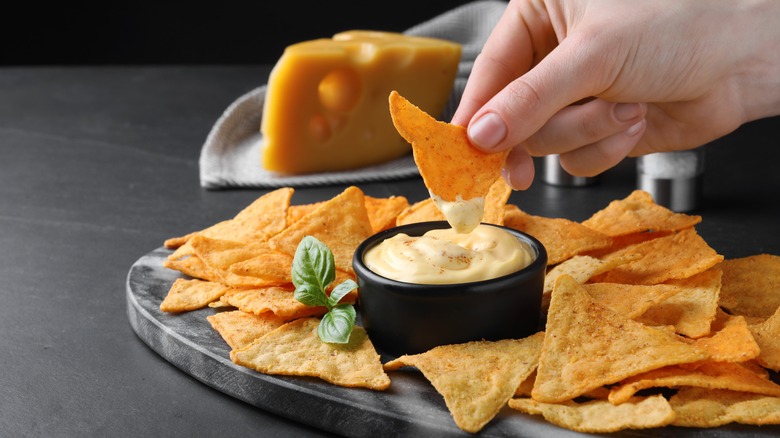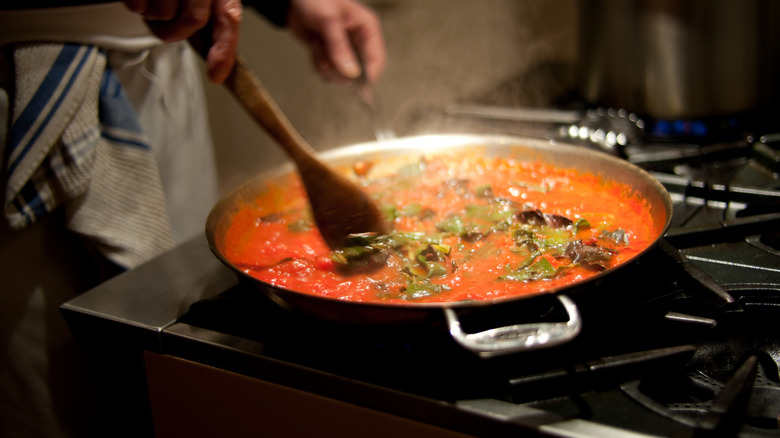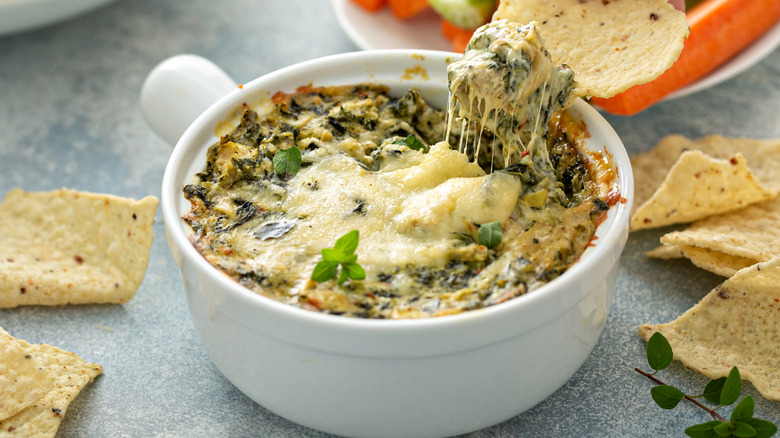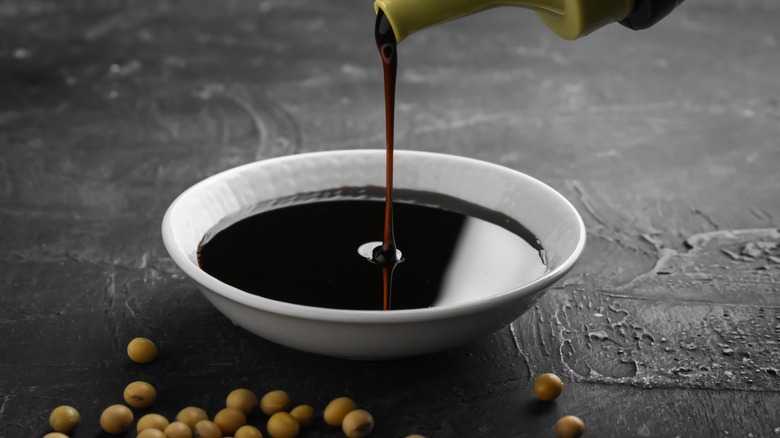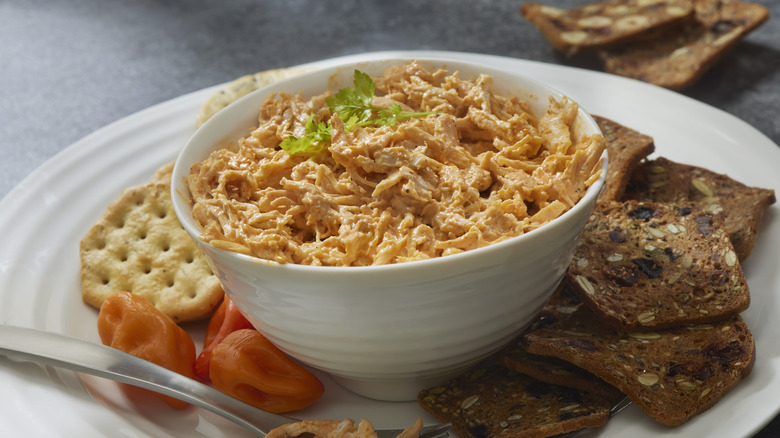What Is The Actual Difference Between Sauces And Dips?
Maybe you have a nice, neatly organized fridge. Or maybe, just maybe, you have a chaotic jungle of refrigerated items complete with a strata of leftovers, beverages galore, and a door that looks something like the condiment aisle of the grocery store. No shade here; in fact, there's something almost comforting about having a vast array of creamy, spicy, or tangy sauces to help church up your meals. But, upon closer inspection, the culinarily pedantic may notice that some of these bottles and jars are labeled sauces while others are categorized as dips and still others as both dips and sauces — to say nothing of those that pull triple-duty as marinades. What then are the differences between a dip and sauce, if there even are any?
The subtle taxonomy here is all in the nuances and, frankly, the eye of the beholder. Be they store-bought or homemade, sauces and dips can be vexing in their similarities, leading people to wonder when to deploy one over the other. The Venn diagram of the two has such overlap that it is less a case of whether a foodstuff is always a sauce or a dip and more of a condition of the use. Yet still, there are helpful little hints that can keep them slightly separated in your mind.
What is a sauce?
Before there was any of this confusion, there was good old sauce, the umbrella term for all of what we should call condiments. It's hard for food historians to pinpoint what the original sauce eaten by humans was because it's likely that as long as there has been cooking — and burning — food, there have been those who sought out some piquant flavoring to elevate — or obfuscate — the flavor. In China, mentions of a salted bean paste called doubanjiang can be found as far back as the 3rd century BCE, and in the Roman empire, people savored the flavor of fermented fish and spices in a sauce called garum.
What's clear is that a sauce needs to be liquid to some degree — an odd fact given that the name is derived from the Latin word for "salted." This characteristic, as opposed to a dry, pulverized spice, helps sauce coat and envelop foods. It also means that a flavor can be stretched further with the addition of water or other liquid. Sauces fall into a range of categories too numerous to detail. For example, in French gastronomy alone there is the hierarchy of Escoffier's five mother sauces and their generous broods.
What is a dip?
It's hard not to sound condescending when explaining what a dip is because it seems like it's right there in the name. A dip is something that you dip another food into to enhance its flavor or complete a dish in some way. A cracker alone is fine, but when it is dipped into rich pimento cheese, isn't it that much more enticing? Crudités is crunchy, satisfying, and healthy, but it really comes alive when it takes a dip into Benedictine or another creamy dip, like ranch.
The likely common understanding of what a dip is hinges on thickness. Dips are meant to cling to food without dribbling off. The crackers and crudités become means of conveyance for the dip, which is generally rather vibrant and rich in flavor. Further evidence of this can be found when purchasing a dip at the store. While bottles typically contain sauces, dips come in tubs with wide mouths for easy access. At home, a dip doesn't get put in a tall jar but spreads out in a bowl so that it can be more readily scooped up.
Sauces are generally more liquid and smooth
It must be said that exceptions abound when trying to compare and contrast sauces and dips. That said, as stated above, sauces trend thin and smooth. They can be cold, hot, or in between but, typically, a sauce is made to be poured over food. Think of luxurious hollandaise laying across eggs benedict, bracing vinaigrette dressing a crisp green salad, and austere sauce pomodoro clinging to fresh pasta. Sauces integrate into the very substance of a dish, be they de rigueur or an addition of preference.
The added moisture of a sauce can come from any number of different places. Water, of course, is at the base of many commercially available sauces, but most homemade sauces have a base with a bit more flavor. Stock and broth each bring a savory note to a sauce, while wine, cider, beer, and spirits are used to add sweet, herbaceous, fruity, and stringent flavors and complexity.
Dips are chunkier
Chunky, creamy, and above all else, clingy, dips are full-bodied — check out our rundown of the best dip recipes for more examples. Where a sauce covers other food, dip stands out, more or less. As with sauce, the category is wildly broad, so it can be difficult to pin down just what one means when they refer to a dip. That's where the very act of eating it comes into play; are you dipping food into the substance? Then it is likely a dip.
Fresh, sliced vegetables, crackers, chips, and hunks of bread are all favored friends of dips. Whether a carrot dragged through whipped hummus, a tortilla chip towering with warm buffalo chicken dip, or a refined crostini used to scoop up an asiago and artichoke dip, dips hold their own. As such, dips can also house a lot more whole or diced ingredients than sauce, such as meats, cheeses, and vegetables. Not that these can't be present in a sauce but, in too large a form, they would only serve to throw off the desired smoothness. With their stout nature, dips can hold onto these items without losing their primary characteristics.
